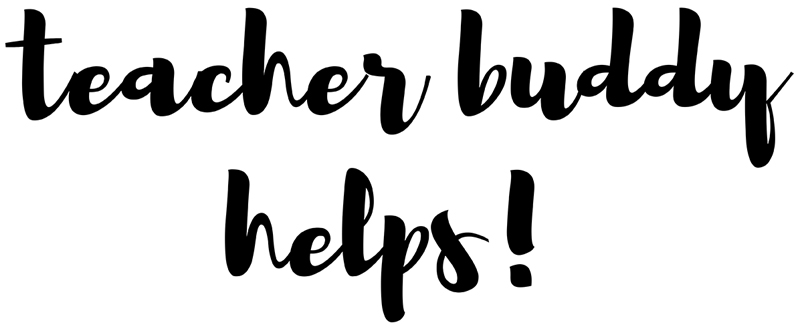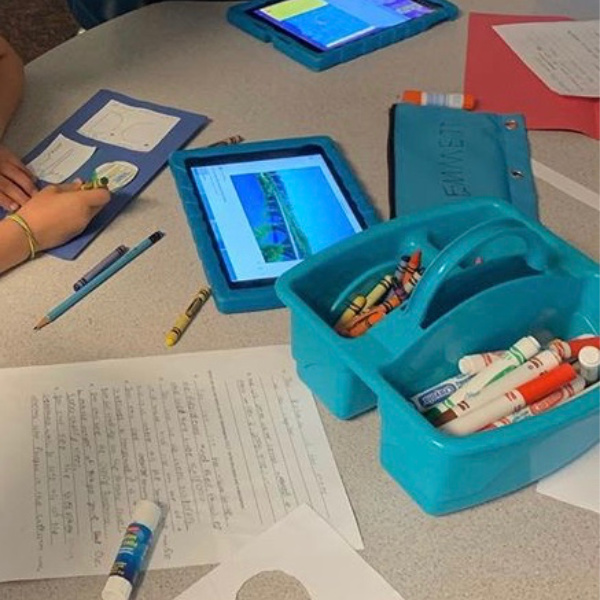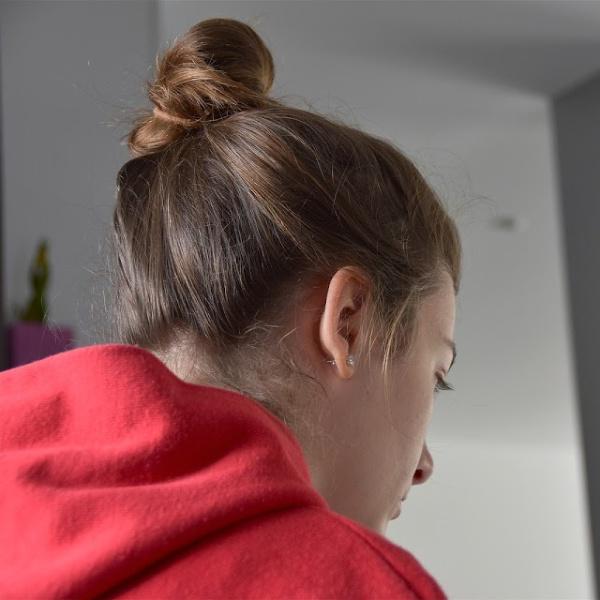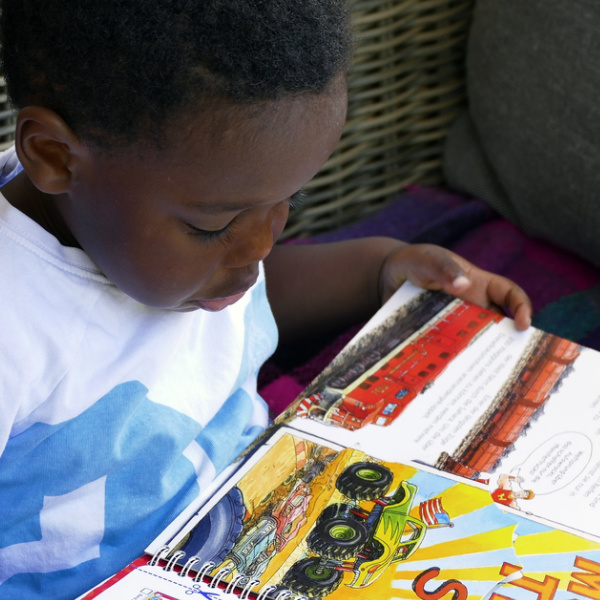How to Use Effective Partner Sharing as an Instructional Strategy
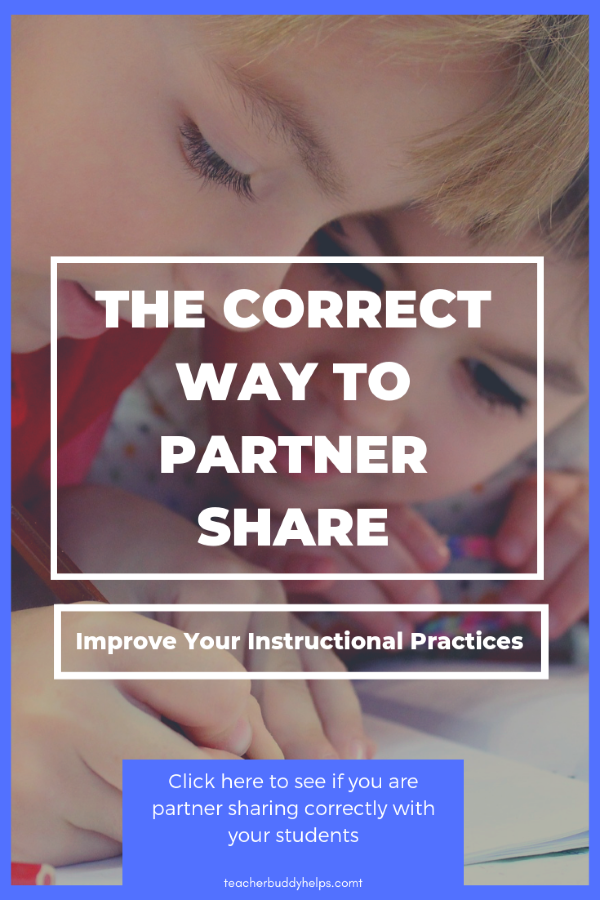
I seem to hear everyone talking about partner sharing or “pair/share” as it is also called. But were you aware that there is a correct way to conduct partner sharing in order to gain optimal results?
I bet most teachers don’t realize this and are doing it incorrectly.

Does it often seem that students just start chatting when you ask them to partner share or “share with your partner?”
Well, part of the reason is that you’re doing it wrong BECAUSE you’ve never been taught (or learned) how to do it correctly.
The students don’t actually know what “share with your partner” entails, so they think it is just permission to start chatting.
**
The CORRECT WAY to Pair/Share
1 Assign each partner grouping a designation of “partner 1 or partner 2” or “partner A and partner B”. Basically, it doesn’t matter the designation, but rather that half are one and half are the other.
2. After assigning the designation, have all the “1s” raise their hand then all the “2s” so that you can ensure that the students understand which one they are.
3. Next have each partner grouping actually turn and face each other. This step is important in order to eliminate outside distractions and to FOCUS attention on the task of ACTIVE LISTENING. Remind the students that you expect both partners to answer these questions in complete sentences.
4. While you are teaching this procedure, have them practice something simple. For example, say “turn to your partner, now partner 1 tell partner 2 what you ate for breakfast this morning.” OR “turn to your partner, partner 1 tell partner 2 all the names of your family members that live in your house with you.”
5. At this point you pause for 30-45 seconds to allow partner 1 to talk.
HALF WAY THERE!
6. Then you state; “now partner 2 tell partner 1…” (say the exact same item to share). Again, allow only 30-45 seconds for this.
7. While this is taking place, you walk the room to monitor the partner sharing. Stop and give pointers to students who are confused or getting it incorrect. Offer praise to students who doing it correctly.
8. Tell the class that you may call on them to repeat their answer, or you may call on them to tell the class what their partner said.
9. Call on a few students doing it both ways.
10. Once you have taught this correctly and in DETAIL. Practice it a couple of times, monitor it closely the first few weeks so that students know that you take this part of their instruction as seriously as you do other parts of the lesson.
Teaching Partner Sharing to Young Students
If you are teaching Kindergarten or First Grade, you will need to be even more detailed when teaching this procedure.
You should model the correct way by having a higher student come to the front to be your partner. Show the students the correct way to “face their partner” explaining why they need to do this.
Then model sharing; you go first to serve as a model to the student that is helping you demonstrate. Start with something easy like, “how many pets do you have and what kind of animal are they?”
Always MODEL what is expected
Model answering the prompt in a complete sentence. Tell the students they need to always respond in a complete sentence.
“I have two pets; they are dogs.”
Then have the partner student answer the same question. Since you selected a higher student, he/she will probably pick up the “complete sentence” rule, but if they don’t – STOP them and help them say it in a complete sentence.
With young students, it’s especially important to have routines in place that you and the students use consistently.
You can download my Classroom Routines Checklist that I am sharing with subscribers for FREE. Just list your email address below and I will send it right off to you!
Highly Guided Practice
Next, call on two volunteers to come up and model the correct way to partner share. Use the EXACT SAME QUESTION that you just modeled.
When they do the modeling; offer praise if it is correct, or give feedback on what needs to be fixed and why.
For example, “I like the way Juan was facing Nicole to answer. But Juan you forgot to answer in a complete sentence, please do it again.”
Do you see how each of these steps leads to the correct way to partner share?
For K and First Grade
Next, for Kindergarten and First Grade students, have the entire class practice that same example. Then select another simple item for them to partner share.
Think of some of your own, or use the ones I’ve already listed. The important part here is that the question needs to be very simple, one they can all answer with ease.
Here are a few more you can use:
- How did you come to school today?
- Are you the oldest, youngest, in the middle or an only child?
- What did you do last night after you had dinner?
- What is your favorite color?
- What do you like to play at recess?

All Students Must Answer Questions in Your Class
For students who have come into your class from a previous class that did not require complete statements for their answers, this may cause a little bit of constructive anxiety.
Do not let them “NOT ANSWER.”
If they sit there mutely, tell them you will come back to them and ask another student to answer (pick someone who can do it).
Then go back to the first student and make him/her answer. Just stop and wait for them to answer.
99% of the time they will answer; (as a last resort, quietly tell him/her that he/she will need to give you the answer to go to recess).
I also discuss this concept in my post entitled: “Ten Ways to Prove You Are in Charge of Your Classroom.”
More Guided Practice
Now have another two students come up to model for the class. This time ask a different (but still fairly simple) question.
You say “turn to your partner, partner 2 tell partner 1 what your favorite color is and name two things that are that color.”
The student response should be “My favorite color is blue; the ocean is blue and so is a bird.” Or something like that – BUT MUST BE A COMPLETE SENTENCE. If the student doesn’t get it correct, help him correct it .
Then have the other partner answer the same question (also with a complete sentence).
Switching It Up
Did you notice that I started this time with partner 2? You need to alternate who you begin with so that the students have turns at answering first in the partnership.
Now have the entire class answer this same question with their partner. Again, you are to move around the room listening to partner responses while this is going on.
If you follow this format, you will see a sharp increase in the number of student paying attention to your lessons and answering in complete sentences.
Now, you try it, and let me know how it’s working in your class. Feel free to ask questions on anything that confuses you.
Remember to use the correct way to Partner Share in your class to enhance Instruction and build student comprehension!
Your Teacher Buddy
